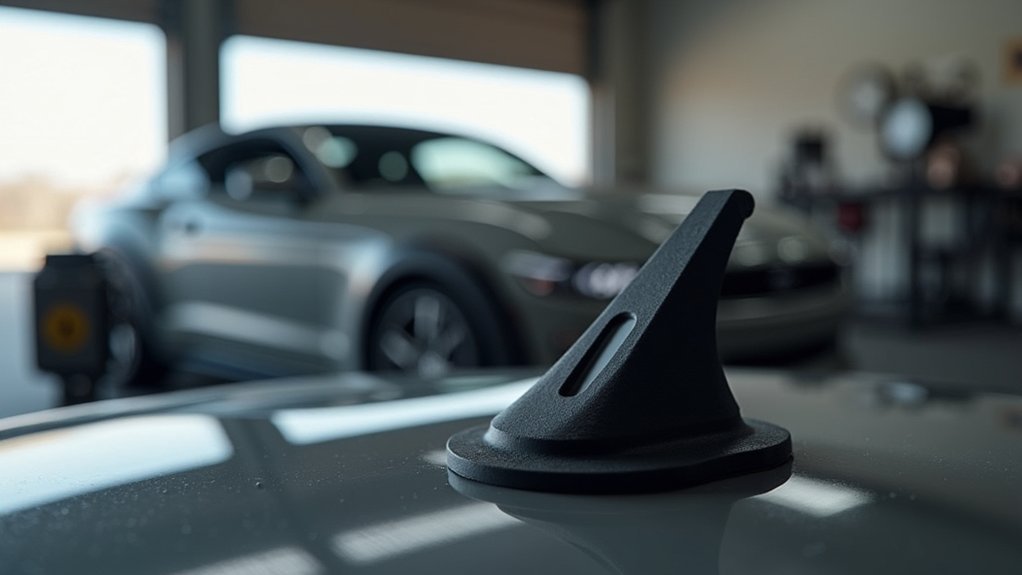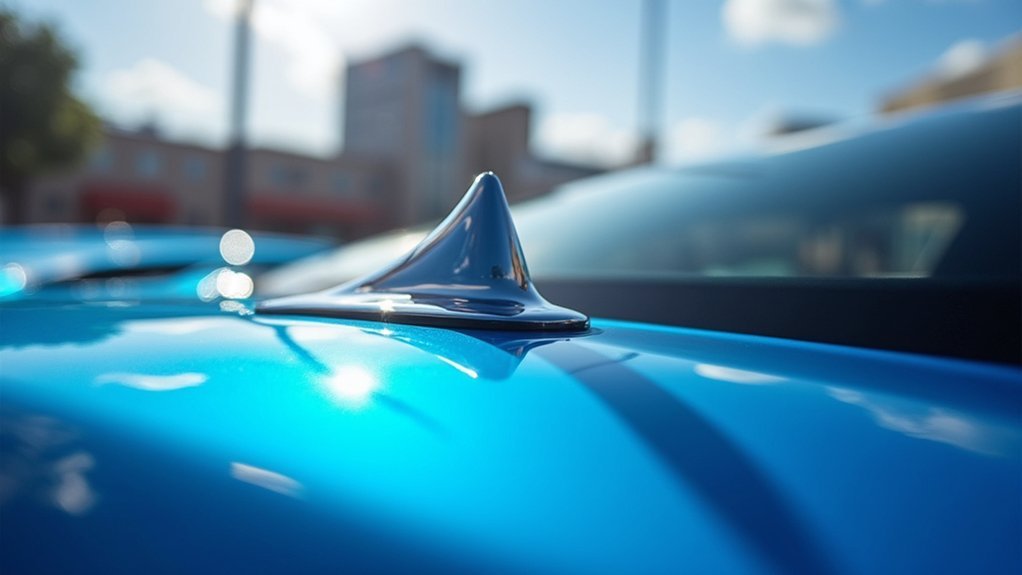When designing custom car antenna mounts, you’ll want to prioritize three key areas for ideal results. First, focus on structural stability by selecting high-strength materials like ABS or PETG and incorporating ribbing or internal lattice structures to enhance stiffness. Second, guarantee environmental durability by choosing weather-resistant materials and avoiding galvanic corrosion between dissimilar metals. Third, implement thorough testing protocols including stress tests, environmental assessments, and signal strength measurements to validate your design’s real-world performance and identify areas for improvement.
Design Considerations for 3D Printed Antenna Mount Stability

When designing a 3D printed antenna mount for your vehicle, you’ll need to prioritize material selection and structural integrity to guarantee long-term performance. Choose high-strength materials like ABS or PETG that’ll withstand vibrations and environmental stressors during operation.
Incorporate ribbing or internal lattice structures to enhance stiffness and reduce flex, improving overall stability.
Focus on weight distribution by positioning the antenna’s center of mass as low as possible in your design. This prevents tipping and maintains balance.
Create a mounting base with a wider footprint to distribute forces evenly, preventing loosening during high-speed travel or off-road conditions.
Include cable management provisions within your design to securely route antenna cables, reducing interference and preventing wear over time.
Material Selection and Environmental Durability for Custom Mounts
Material selection forms the foundation of your custom antenna mount’s longevity, directly impacting its ability to withstand harsh automotive environments.
You’ll need to prioritize corrosion prevention by choosing weather-resistant materials like powder-coated steel or aluminum for superior environmental durability.
Avoid galvanic corrosion by selecting compatible metals—use zinc-coated inserts instead of stainless steel to prevent electrochemical reactions in damp conditions.
When combining dissimilar metals, incorporate non-conducting materials or isolating coatings between them.
High-quality materials greatly outperform cheaper alternatives in automotive applications.
Carbon steels can act as sacrificial anodes when paired with stainless steel, accelerating deterioration.
Establish regular maintenance schedules to inspect connections and material integrity.
Your custom antenna mounts will deliver ideal performance when you invest in proven, compatible materials designed for automotive environments.
Testing and Optimization of 3D Printed Mounting Solutions

Although 3D printing technology offers unprecedented design flexibility for custom antenna mounts, you’ll need rigorous testing protocols to guarantee your printed solutions can handle real-world automotive conditions. Physical stress tests are essential for evaluating your 3D printed mounts under vibrations and weather exposure while maintaining structural integrity.
| Test Type | Assessment Focus | Success Criteria |
|---|---|---|
| Physical Stress | Vibration resistance | No cracks or deformation |
| Environmental | Weather exposure | Material stability maintained |
| Signal Strength | Antenna efficacy | Ideal reception quality |
| Weight Distribution | Mounting solution balance | No vehicle body strain |
| Long-term Durability | Performance metrics | Consistent antenna mounting |
Conduct signal strength tests after installation to measure antenna efficacy. Use CAD software for design optimization, focusing on environmental factors. Regular inspections help identify wear patterns requiring redesign adjustments.
Frequently Asked Questions
Where Is the Best Place to Mount an Antenna on a Car?
You’ll get the best performance by mounting your antenna at the center of your roof. This location provides maximum height, minimizes obstructions, and greatly enhances your signal clarity and communication range.
How Do I Make My Car Antenna Better?
You’ll improve your car antenna’s performance by ensuring proper grounding to bare metal, using quality coaxial cable, avoiding tight coils, keeping cables away from ignition systems, and choosing higher-gain antennas.
Where Is the Best Place to Mount a CB Antenna?
You’ll get the best performance by mounting your CB antenna at the highest point on your vehicle’s roof center. This location maximizes range, minimizes obstructions, and reduces signal distortion from your vehicle’s body.
Where Is the Best Place to Mount a GMRS Antenna?
You’ll want to mount your GMRS antenna as high as possible on your vehicle’s center roof for maximum range. Make certain you’ve got bare metal contact for proper grounding and avoid interference sources.





Leave a Reply